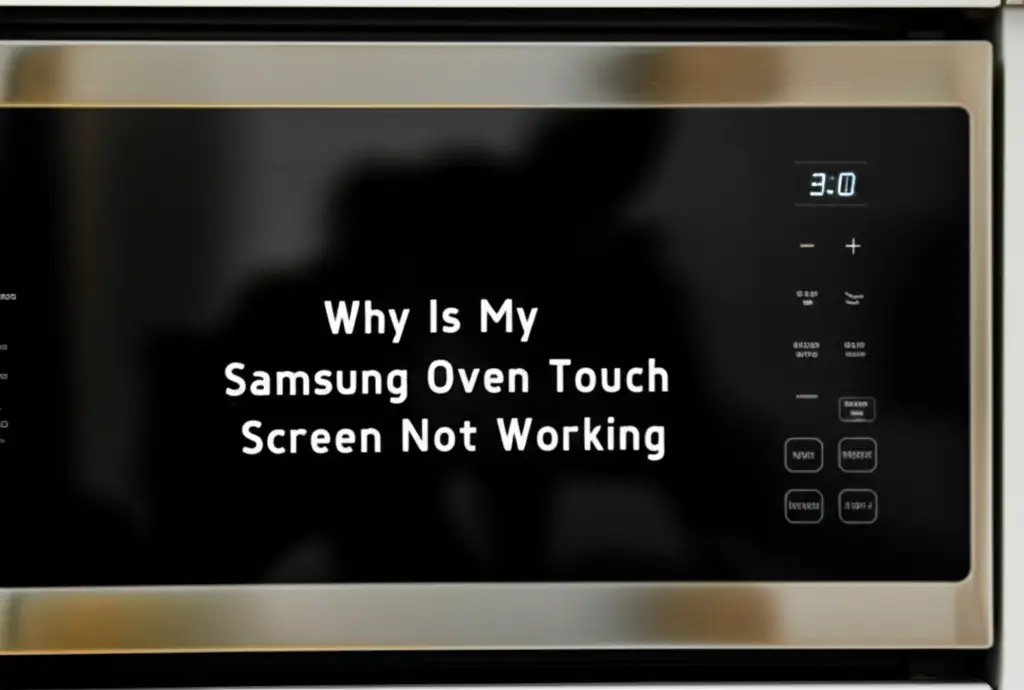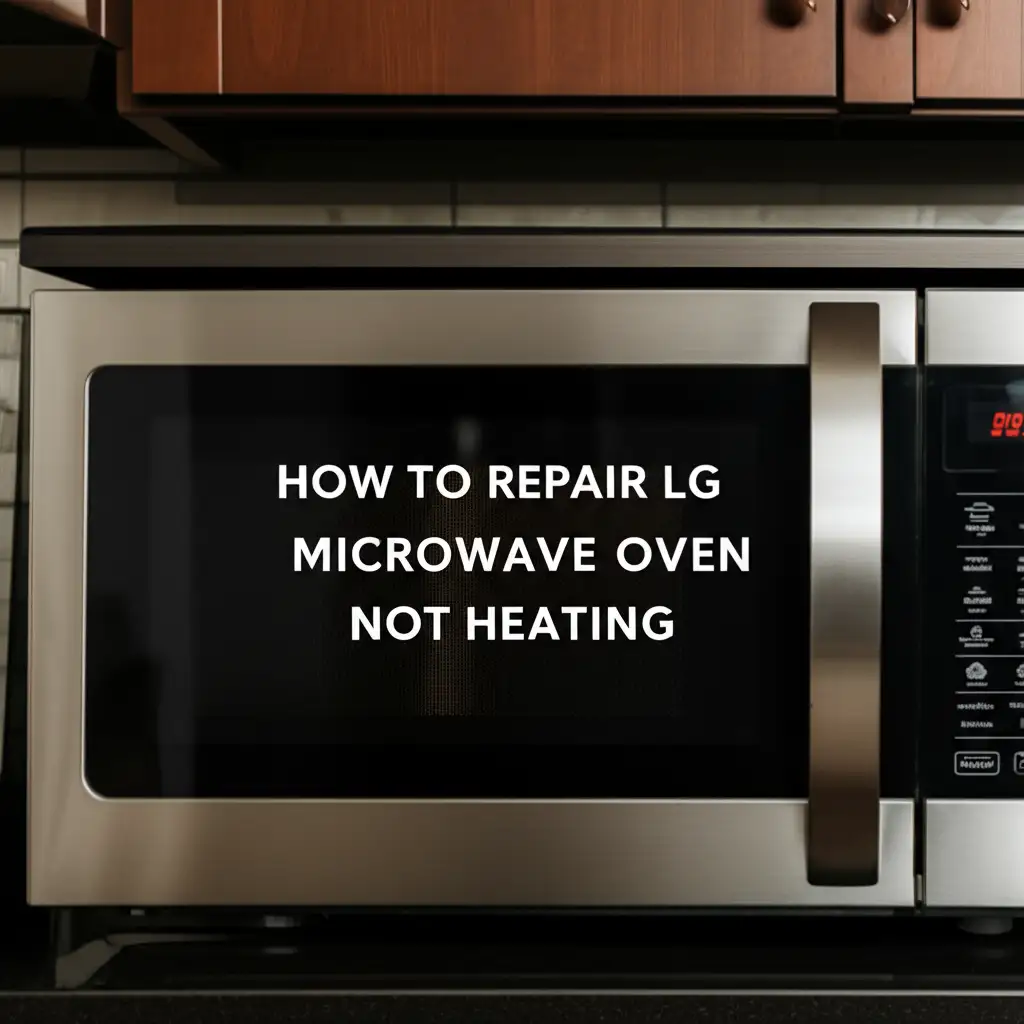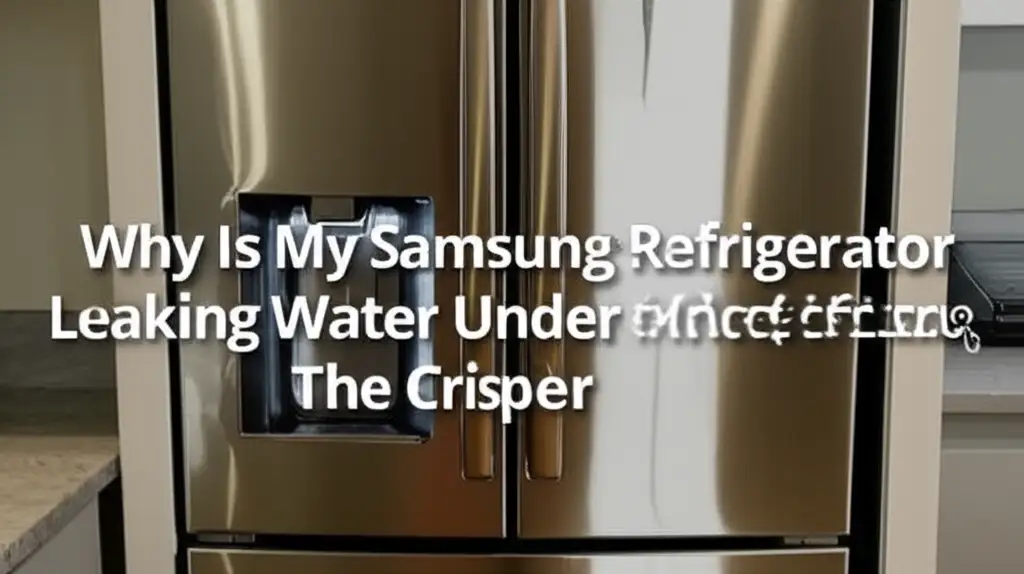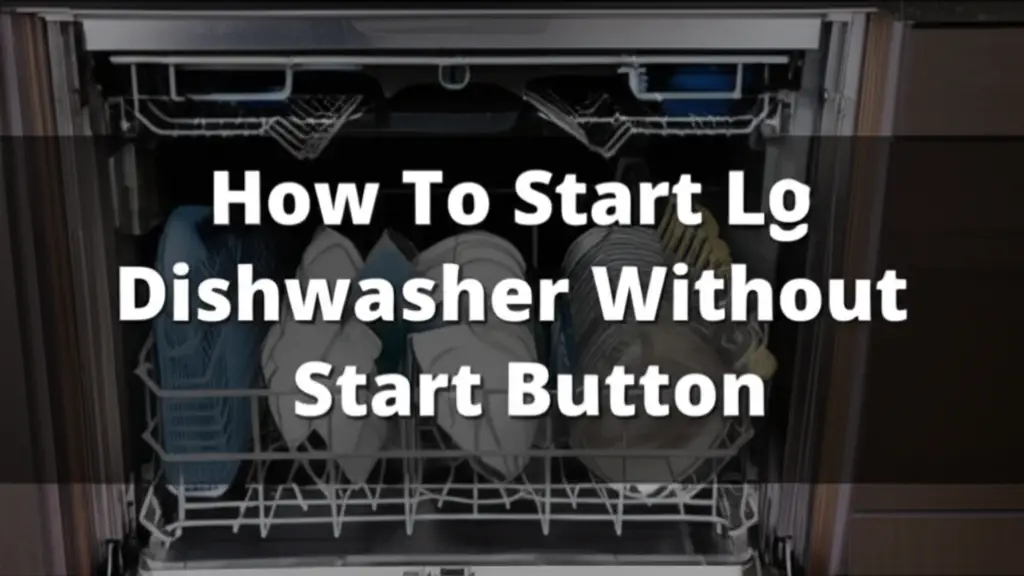· Katria Melrose · Home Appliances · 20 min read
Why Is My Samsung Oven Touch Screen Not Working

Resolving Your Samsung Oven Touch Screen Not Working
Modern kitchen appliances bring great convenience. My Samsung oven, with its sleek touch screen, makes cooking simple. But what happens when the touch screen stops responding? A non-working touch screen on your Samsung oven can halt your cooking plans. It turns a smart appliance into a frustrating puzzle.
Many Samsung oven owners face this issue. An unresponsive display prevents you from setting temperatures or timers. You cannot even turn on the oven. This guide explores common reasons why your Samsung oven touch screen is not working. We provide clear, simple troubleshooting steps. I will help you diagnose the problem and offer practical solutions. You can get your smart oven back to full function. Let’s fix this issue together.
Takeaway: Get Your Samsung Oven Touch Screen Working
- Perform a power cycle. Unplug your oven or flip its breaker for a few minutes. This often resolves minor glitches.
- Clean the screen properly. Use a soft cloth and screen cleaner. Remove smudges and debris that hinder touch.
- Check for child lock. Ensure the control panel is not accidentally locked. Look for a lock icon on the display.
- Consider a software reset. A factory reset can fix deep software issues. Back up any custom settings first.
- Inspect for physical damage. Look for cracks, dents, or loose connections. Damaged hardware needs professional attention.
A clear, concise answer to the main query: Your Samsung oven touch screen is not working often due to simple software glitches, power interruptions, or a dirty screen. Sometimes, it is just a locked control panel. Less often, hardware failures like a damaged display or control board cause the problem, requiring professional repair.
Initial Troubleshooting: Power Cycle Your Samsung Oven
One of the most effective first steps when your Samsung oven touch screen is not working is a simple power cycle. This process is like rebooting a computer. It clears temporary errors and refreshes the system. Many electronic devices benefit from this basic reset. I always start here when an appliance acts strangely.
Electronic devices can accumulate software glitches. These glitches interrupt normal operations. A power cycle removes residual power. It forces the control board to restart its processes from scratch. This can fix an unresponsive display or frozen interface. It is a quick and safe method.
The Power Cycle Process
Power cycling your Samsung oven is straightforward. First, you need to cut the power completely. Do this by either unplugging the oven from its wall outlet. Or, if it is hardwired, go to your home’s circuit breaker box. Locate the breaker labeled for your oven or kitchen. Flip that breaker to the “off” position.
Wait for at least 5 to 10 minutes. This waiting period is important. It allows any residual electrical charge to dissipate fully. After waiting, restore power. Plug the oven back in or flip the circuit breaker back to the “on” position. The oven should power on. Check if the touch screen now responds normally.
Why Power Cycling Works
Think of your oven’s touch screen and control board as a small computer. Like any computer, it can freeze or encounter minor software bugs. These bugs do not signify permanent damage. They are temporary hiccups in the system’s operation. A power cycle forces the system to shut down completely. It then restarts all internal processes.
This fresh start often resolves the issue. It clears the oven’s memory of any conflicting commands or stuck states. Many minor issues, including an unresponsive touch screen, disappear after a successful power cycle. It is the most common and easiest fix. Do not underestimate its power.
Safety First
Always prioritize safety when working with electrical appliances. Before you unplug the oven or touch the circuit breaker, make sure your hands are dry. Do not stand in water. If you are unsure about which breaker controls your oven, consult your home’s electrical panel diagram. Or, turn off the main breaker for extra safety.
Ensure the area around the oven is clear. You want to avoid tripping hazards. Do not attempt to open the oven’s panels unless you are qualified. A power cycle is a safe procedure that does not require opening the appliance. It is the first, safest step to take.
Is Your Samsung Oven Touch Screen Dirty or Obstructed?
Sometimes, the simplest explanation is the right one. A dirty touch screen can be the reason your Samsung oven touch screen is not working. Grease, food splatters, and general kitchen grime build up on the display. These residues create a barrier. They prevent your finger from making proper contact with the sensor.
Even a thin layer of residue can cause issues. It makes the screen unresponsive. Or it registers touches in the wrong places. Before assuming a major malfunction, give your screen a good clean. This is an easy and inexpensive step. It often solves the problem instantly. I have seen this happen many times.
Proper Cleaning Techniques
Cleaning your Samsung oven touch screen requires care. You should use the right materials. First, power off the oven completely. This prevents accidental changes to settings. It also makes cleaning safer. Use a soft, lint-free microfiber cloth. A cloth designed for cleaning eyeglasses or electronic screens works best.
Dampen the cloth slightly with a cleaning solution. You can use a specific screen cleaner. Or, mix equal parts of distilled water and white vinegar. Do not spray cleaner directly onto the screen. This can cause liquid to seep into the internal components. Gently wipe the screen in one direction. Then wipe it again in the opposite direction. Be gentle; do not press too hard. For more general advice on keeping your displays clean, you might find tips on how to clean your mobile phone touch screen helpful. Similarly, principles from how to clean a Samsung TV screen can apply.
What to Avoid When Cleaning
Certain cleaning products and methods can damage your oven’s touch screen. Never use abrasive cleaners. Avoid paper towels. They can scratch the screen surface. Do not use strong chemical solvents. Glass cleaners containing ammonia or alcohol can damage the screen’s protective coating. These coatings are vital for touch functionality.
Do not saturate the cloth too much. Excess liquid can seep into the screen’s edges. This causes internal damage. Water damage can lead to permanent touch screen failure. Always ensure the screen is dry before turning the oven back on. Patience and gentle care are key here.
Checking for Physical Obstructions
Beyond dirt, physical obstructions can affect the touch screen. Sometimes, a protective film or sticker might be partially peeled. This creates an uneven surface. It interferes with touch recognition. Check the edges of the screen for any such issues. Remove any peeling film carefully.
Also, examine the area around the screen. Ensure nothing is pressing against it. A small piece of food debris or a displaced trim piece could cause constant pressure. This mimics a continuous touch. The screen then becomes unresponsive to new inputs. A thorough visual inspection can reveal these simple problems.
Software Glitches and System Freezes
Modern Samsung ovens are smart appliances. They run on complex software. Just like your smartphone or computer, this software can sometimes encounter glitches. A software glitch can make your Samsung oven touch screen not working. It might freeze, become unresponsive, or display error messages. These issues are frustrating but often temporary.
These glitches can stem from various sources. A sudden power fluctuation might corrupt temporary files. An incomplete software update could cause system instability. Or, prolonged operation without a refresh can lead to memory overload. Understanding these underlying causes helps us find the right solution. I have seen similar issues in other Samsung appliances, like when a Samsung microwave is not working but has power.
Forced Restart Steps
When a simple power cycle does not work, a forced restart is the next step. This is more direct. It forces the oven’s system to reset immediately. Look for a specific button combination. Many Samsung ovens have a “Cancel” or “Off” button. Press and hold this button for 10-15 seconds. The display might flash or go blank. This indicates a system reset.
Releasing the button should allow the oven to restart. The touch screen should then function normally. If your model does not have a single button for a forced restart, try pressing and holding two common buttons simultaneously. Common combinations include “Start” and “Cancel” or “Clock” and “Timer.” Check your specific oven’s user manual for exact instructions. The manual always has the best guidance.
Software Updates and Their Impact
Samsung periodically releases software updates for its smart appliances. These updates bring new features. They also fix bugs and improve performance. An outdated software version might contain unaddressed bugs. These bugs could cause your touch screen to malfunction. Conversely, a failed or interrupted update can also corrupt the system.
Check if your oven has pending updates. Connect your oven to your home’s Wi-Fi network. Then access the settings menu on the touch screen. Look for a “Software Update” or “System Information” option. If the screen is completely unresponsive, you may need a service technician to force an update. Ensure your Wi-Fi connection is stable during any update process. This prevents corruption.
Factory Resetting Your Samsung Oven
A factory reset is a more drastic step. It erases all custom settings. This includes time, temperature preferences, and Wi-Fi connections. It restores the oven’s software to its original factory state. This method is highly effective for resolving deep-seated software issues. It is a powerful tool to make your Samsung oven touch screen work again.
The process for a factory reset varies by model. You will usually find it within the “Settings” or “System” menu. Look for an option like “Factory Reset” or “Restore Defaults.” You may need to confirm your choice. Always consult your user manual for exact steps. It is important to know that all your personalized settings will be lost. You will need to reconfigure them after the reset. For specific models, the process might involve steps similar to how to unlock your Samsung stove oven or enter a service menu.
Child Lock or Control Lock Engaged?
Sometimes, the reason your Samsung oven touch screen is not working is surprisingly simple. The control lock feature might be active. This feature, often called “Child Lock” or “Control Lock,” is designed for safety. It prevents accidental operation of the oven. This is especially useful in homes with children.
When the control lock is on, the touch screen becomes unresponsive. It does not register any inputs. This is its intended function. Many users forget this feature is active. Or, it gets turned on by accident. Checking for the lock status is a crucial troubleshooting step. It saves you from unnecessary worry.
Identifying a Locked Control Panel
How do you know if your Samsung oven’s control panel is locked? Most Samsung ovens will display a specific indicator. Look for a small lock icon on the touch screen. This icon might be a padlock symbol. It could also be a key symbol. Sometimes, the screen will display “Loc” or “Control Locked.” The exact symbol or message depends on your oven model.
If you see any of these indicators, the lock is active. You will not be able to use the touch screen until you disable it. The buttons will not respond to your touches. This is normal behavior for a locked panel. Confirming this status helps narrow down the problem.
Disabling the Lock Feature
Disabling the control lock is usually simple. You need to press and hold a specific button or combination of buttons. Often, it is the button with the lock icon. Or, it is labeled “Control Lock” or “Lock.” You typically need to press and hold it for 3 to 5 seconds. The lock icon on the display should disappear.
Some models require holding two buttons simultaneously. Common combinations include “Bake” and “Broil,” or “Timer” and “Clock.” Again, your oven’s user manual is the best resource. It provides the exact steps for your specific model. Once unlocked, the touch screen should become fully responsive. Try pressing a few buttons to confirm.
Preventing Accidental Locks
Accidental activation of the child lock is common. You can take steps to prevent it. Educate family members about the feature. Show them how to turn it on and off. This prevents accidental locking. If you have young children, consider using the lock feature regularly. This is safer.
Be mindful when cleaning the control panel. Accidental touches during cleaning can activate the lock. Always power off the oven before cleaning the screen. This eliminates accidental button presses. Understanding and managing the control lock feature helps avoid this simple yet frustrating issue.
Assessing Hardware Malfunctions
If power cycling, cleaning, and software fixes do not resolve the issue, a hardware malfunction might be the cause. Hardware problems are more serious. They often require replacement parts or professional repair. Your Samsung oven’s touch screen is a complex piece of hardware. It connects to the main control board. Any damage to these components can cause unresponsiveness.
Diagnosing hardware issues is difficult for a homeowner. It involves opening up the appliance. It also requires testing electrical components. This can be dangerous. However, knowing the common hardware culprits helps you understand the problem. It also helps you decide if you need professional help.
Loose Connections and Wiring
Inside your Samsung oven, the touch screen connects to the main control board via electrical wiring. These connections are crucial. Over time, vibrations from the oven’s operation can loosen these wires. Or, they can become dislodged during moving or cleaning. A loose wire means the touch screen is not getting power. Or, it cannot send signals to the control board.
Symptoms of a loose connection include intermittent unresponsiveness. The screen might work sometimes but not others. Or, it might flicker. Checking these connections requires removing the oven’s outer panels. This should only be done by someone with electrical knowledge. Always disconnect power to the oven first.
Damaged Touch Panel Components
The touch panel itself can suffer damage. Physical impact, even a slight bump, can damage the internal digitizer. This is the component that registers your touches. A cracked screen is an obvious sign of damage. But sometimes, the damage is internal. You might not see it.
Liquid spills can also damage the touch panel. Even small amounts can seep into the screen layers. They disrupt the electrical circuits. Signs of internal damage include dead zones on the screen. Certain areas might not respond at all. Or, the screen might ghost touch. It registers touches that did not happen. In such cases, the touch screen unit usually needs replacement.
The Control Board Issue
The control board is the “brain” of your Samsung oven. It manages all functions, including the touch screen. If the control board is faulty, the touch screen will not work. It cannot receive commands or send data. A bad control board can manifest in various ways. The screen might be completely blank. Or, it might show garbled text or error codes.
Diagnosing a bad control board is complex. It often requires specialized tools. A technician can test the board’s functionality. They check for voltage and signal integrity. If the board is faulty, it must be replaced. This is often an expensive repair. It typically requires professional expertise. Knowing about common Samsung oven issues, such as why your Samsung oven takes so long to preheat or why it turns off when you open the door, can sometimes point to deeper control board problems.
Environmental Factors Affecting Touch Screen Performance
Your Samsung oven’s touch screen is sensitive. Its performance can be affected by the environment. Kitchens are dynamic places. They experience wide ranges of temperature and humidity. These factors can impact electronic components. Understanding how environment plays a role helps in troubleshooting.
It is easy to overlook environmental influences. But they can cause a perfectly good touch screen to malfunction. This is especially true if the issue is intermittent. Or if it occurs only under specific conditions. I always consider the kitchen environment when diagnosing appliance issues.
Humidity and Temperature Effects
High humidity can cause condensation inside electronic devices. This condensation creates shorts or interferes with electrical signals. If your kitchen is very humid, tiny moisture droplets might form on the touch screen’s internal components. This leads to unresponsiveness or erratic behavior. Low humidity, though less common as a cause, can sometimes contribute to static electricity. Static can temporarily interfere with touch sensors.
Extreme temperatures also play a role. Ovens generate a lot of heat. While the touch screen is designed to withstand typical oven operating temperatures, prolonged exposure to very high or fluctuating temperatures can stress its components. This causes them to degrade faster. Or they temporarily malfunction. Ensure good ventilation in your kitchen. This helps manage temperature and humidity levels around your oven.
Electromagnetic Interference
Other electronic devices in your kitchen can generate electromagnetic fields. These fields can interfere with your oven’s touch screen. Devices like microwaves, blenders, or even strong Wi-Fi routers emit signals. These signals might disrupt the sensitive electronics of the touch screen. The interference can cause the screen to become unresponsive. Or it registers false touches.
If you notice the issue occurs only when other specific appliances are running, try to identify the source. Test your oven’s touch screen with other appliances turned off. If the problem disappears, you have found your culprit. Consider relocating the interfering appliance. Or, move your oven slightly if possible. Shielding the oven’s electronics is also a possibility, but this usually requires professional help.
Appliance Placement Considerations
The physical placement of your Samsung oven in the kitchen matters. Is it too close to a heat vent? Is it near a constantly open window that lets in cold drafts? These can create microclimates around the oven. Such conditions can put stress on the touch screen. Direct sunlight hitting the screen for extended periods can also cause problems. UV radiation and heat from the sun can degrade the screen’s layers over time.
Ensure your oven has proper clearances around it for ventilation. Avoid placing it directly next to powerful radiating devices. If possible, shield it from direct sunlight exposure. These small adjustments can prolong the life of your touch screen. They can also prevent intermittent issues. A stable environment helps your oven perform optimally.
When to Seek Professional Samsung Service
You have tried all the troubleshooting steps. You have power cycled the oven. You have cleaned the screen. You have checked for locks and software glitches. Yet, your Samsung oven touch screen is not working. At this point, it is time to consider professional help. Some issues are simply beyond DIY repair. They require specialized tools, technical knowledge, or proprietary parts.
Attempting complex repairs yourself can be risky. You might damage the oven further. You could also void your warranty. Knowing when to call a professional saves you time, money, and potential headaches. I always recommend caution when dealing with electrical appliances.
Recognizing When DIY Ends
Your do-it-yourself efforts should stop when you encounter certain situations. If you suspect a faulty main control board, stop. If you see visible damage to internal wiring or components, stop. If the problem involves high voltage components, stop. These repairs require a trained technician. They have the expertise to safely diagnose and fix these issues.
Also, if the oven is still under warranty, always contact Samsung first. Performing your own repairs might void that warranty. A professional service call ensures the repair is done correctly. It also protects your investment. Do not hesitate to call for help when you reach your limit.
Contacting Samsung Support
Samsung has a dedicated customer support system. This is your first point of contact for professional help. Have your oven’s model number and serial number ready. These are usually found on a label inside the oven door frame. Or, they are on the back of the appliance. Provide a clear description of the problem. Explain all the troubleshooting steps you have already tried.
Samsung support can often provide further remote troubleshooting. They might guide you through advanced resets specific to your model. If remote solutions fail, they will schedule a service appointment. They send a qualified Samsung technician to your home. This ensures genuine parts are used for any repair.
Warranty Considerations
Always check your Samsung oven’s warranty status. Most new appliances come with a limited warranty. This covers parts and labor for a specific period. If your oven is still under warranty, any repair related to manufacturing defects will be covered. This means you pay nothing.
Keep your purchase receipt and warranty documents handy. They prove your eligibility for service. If your warranty has expired, you will be responsible for the repair costs. However, using a certified Samsung technician is still advisable. They ensure the repair is done correctly. They also often provide a warranty on their repair work itself. This gives you peace of mind.
FAQ Section
Q1: Why is my Samsung oven display completely blank?
A blank Samsung oven display often indicates a power issue or a major control board failure. First, check if the oven is plugged in securely or if its circuit breaker has tripped. A power cycle by unplugging or flipping the breaker for 5-10 minutes can often resolve minor glitches. If the display remains blank, the control board might be faulty. This typically requires professional diagnosis and replacement.
Q2: Can I fix a Samsung oven touch screen myself?
You can fix minor issues yourself. Start with basic troubleshooting steps like power cycling the oven and cleaning the touch screen. Check for child lock activation. If these steps do not work, and you suspect a deeper software glitch, a factory reset might help. For hardware problems like damaged components or a faulty control board, professional repair is recommended to avoid further damage or safety risks.
Q3: How do I hard reset my Samsung oven?
A hard reset, or power cycle, involves disconnecting power to the oven. Unplug the oven from its wall outlet. Or, locate the circuit breaker for your oven in your home’s electrical panel and switch it off. Wait for 5 to 10 minutes. This allows the system to completely discharge and reset. Then, restore power. This often clears minor software issues causing the touch screen to be unresponsive.
Q4: What causes touch screen unresponsiveness?
Touch screen unresponsiveness in Samsung ovens can stem from several causes. Common culprits include a temporary software glitch, a dirty screen surface preventing accurate touch detection, or the activation of the child/control lock feature. Less common but more severe causes include loose internal wiring, physical damage to the touch panel, or a malfunction of the main control board.
Q5: How long do Samsung oven touch screens last?
The lifespan of a Samsung oven touch screen depends on usage, maintenance, and environmental factors. Generally, they are designed to last the typical lifespan of the appliance, which is usually 10-15 years. However, factors like frequent physical impact, exposure to extreme temperatures, high humidity, or repeated liquid spills can shorten the lifespan. Regular, gentle cleaning helps prolong its functionality.
Q6: Is a flickering Samsung oven screen a bad sign?
A flickering Samsung oven screen can indicate various issues. It might be a sign of an unstable power supply or loose electrical connections within the oven. It could also suggest a failing display component or a glitch in the main control board’s software. A power cycle might resolve temporary flickering. However, persistent flickering often warrants professional inspection as it could precede complete screen failure.
Conclusion
It is truly frustrating when your Samsung oven touch screen is not working. Modern appliances make our lives easier, but issues like this can halt daily routines. We have explored many common reasons for an unresponsive display. My aim was to equip you with clear, actionable steps. You can often fix these problems yourself.
Remember to start with the simplest solutions. Begin with a power cycle. Then, thoroughly clean the screen. Check for any active control locks. If these basic steps fail, delve into software fixes like a forced restart or a factory reset. For persistent issues, especially those pointing to hardware problems, do not hesitate. Contact Samsung support for professional assistance. Your Samsung oven can be fully





